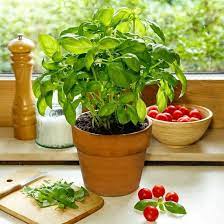Last Updated on August 16, 2023 by Real Men Sow
Basil in winter is a popular plant to grow at home. Basil is a great addition to any kitchen and doesn’t require a large garden. It is also great to plant near tomatoes to repel pests. Basil’s tolerance to cold and winter will be tested. It can withstand temperatures up to 40°F.
Although the herb will not completely die, it will suffer severe damage. It will begin to fall and its leaves will turn dark brown. Basil can be damaged as soon as temperatures drop. Make sure you have a way of protecting your plant.
Keeping Basil Indoors for the Winter
You can save time by moving your plants indoors so you have enough time to harvest your plants before the cold weather hits. These are some of the options you can try:
- Place the basil in a greenhouse or in a room of your home.
- Take your basil to the kitchen. This is a good option as you will be using the basil most often before it rests.
Keeping Indoor Basil in Winter Alive
To keep your basil plant alive in winter, you need to give it as much light as you can. Here are some tips:
- Switch to artificial light sources during the dark winter months. A good starting point is 12 hours of daylight. This simple rule applies: Two hours of fluorescent lighting is equivalent to one hour of natural sunshine.
- Drain excess water from the soil and keep it warm.
- Put your basil in front of a window during daylight. Basil requires at least eight hours of sunlight each day to thrive.
Tips for Preserving Basil in Winter For The Next Year
To ensure your basil remains fresh throughout the winter, there are some steps you can take. These tips will allow you to enjoy year-round harvests, and ensure your plant thrives in the following summer.
- Keep your basil healthy.
- Practise frequent pruning to encourage it to grow.
- To prepare for replanting, soak the roots of basil cuttings in water.
- Use fluorescent lighting to get faster growth and a higher yield.
- Place your plant indoors to keep it from getting cold in the morning.
What You Should Know
Basil can withstand the winter months, but you should still accept it as an annual herb. Basil has many wonderful properties, including a delicious flavour and a pleasant fragrance.
It also produces prolific harvesting. It helps to keep pests away. Unfortunately, basil is not a long-lived plant. These tips can be used to prolong the life of basil.
Frequently Asked Questions
Does basil have a season?
Basil is a perennial herb that grows in the summer. It thrives in hot weather and enjoys it. Basil is also a great alternative for desert climates. It tolerates heat well, and prefers well-drained soil. Basil is best planted in late spring or early summer.
Does basil die every year?
Basil, like many annual herbs, is designed to live its entire life cycle in one year. After that it will return to its seed stage. Basil may stay longer in a greenhouse than it would in the garden, but it will eventually die. This is why you should plan to purchase another starter plant or to plant new seeds in late spring after the last frost of the winter.
Does basil grow back?
Basil can be a perennial in frost-free areas. It can survive for up to 2 years without needing to be replanted in warmer climates. Indoor basil plants that receive full sun and warm temperatures will last longer. Make sure to take the proper steps to protect your plant before the fall arrives.

